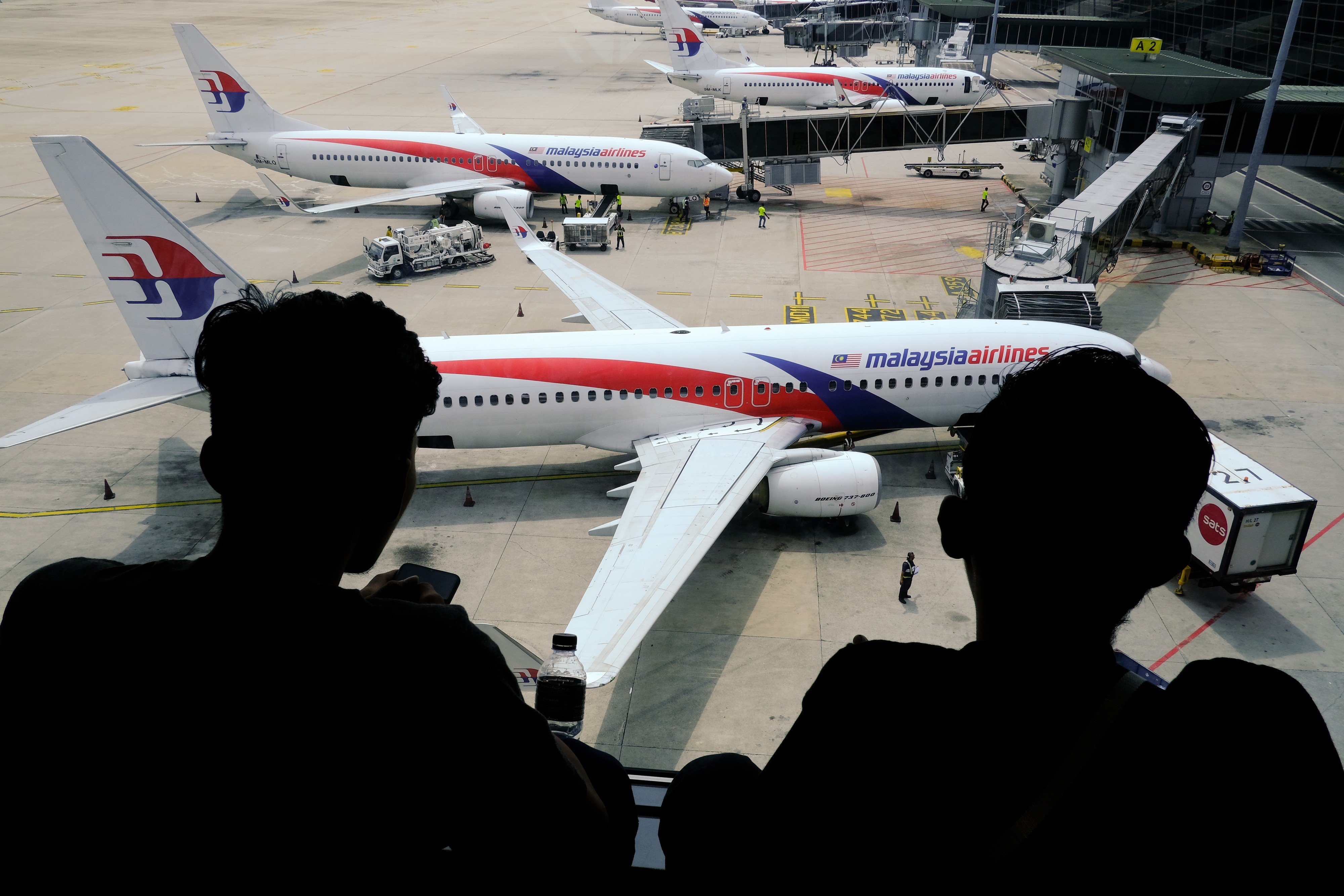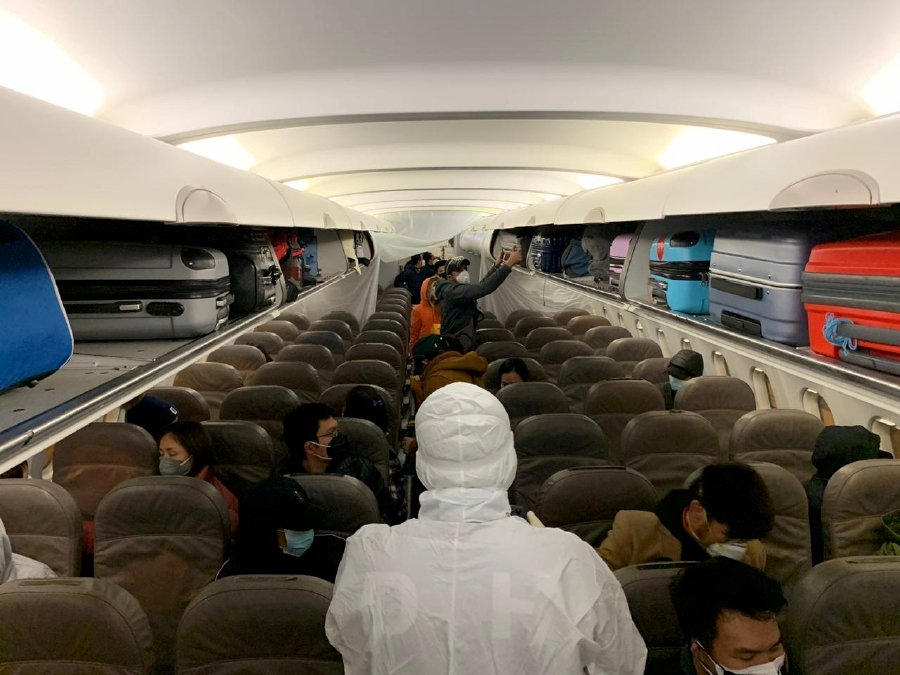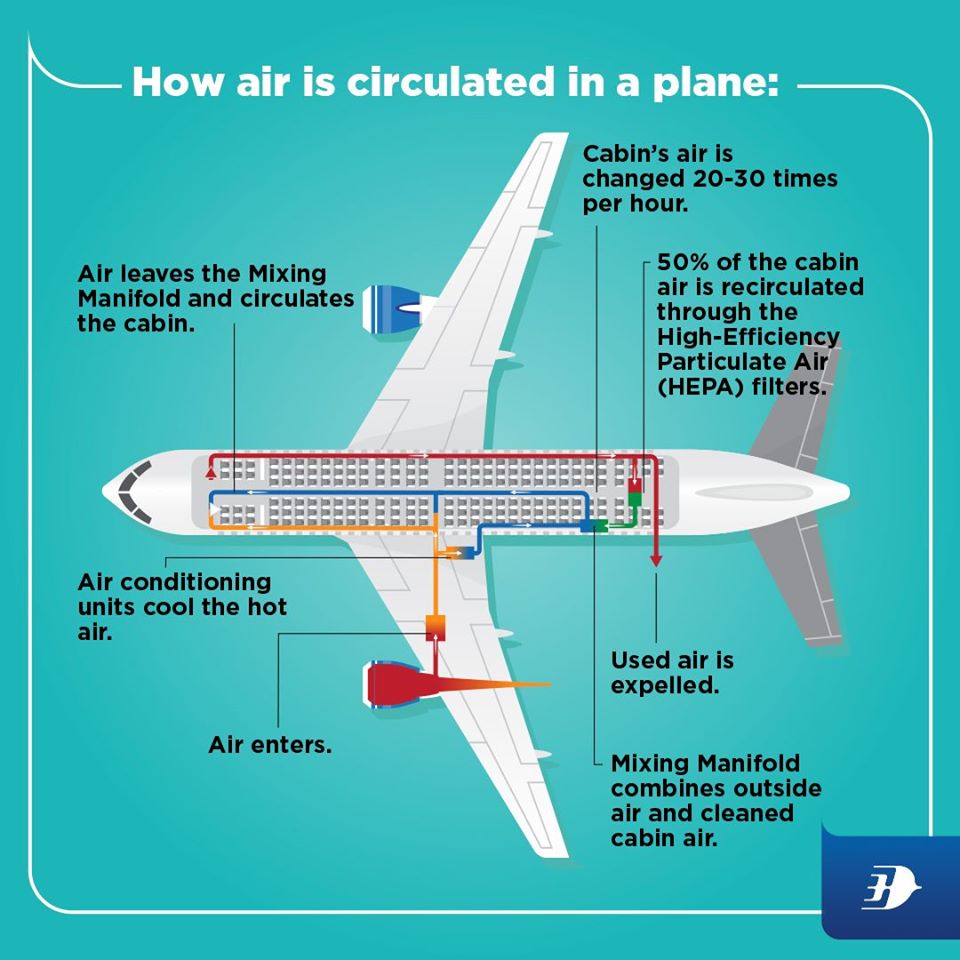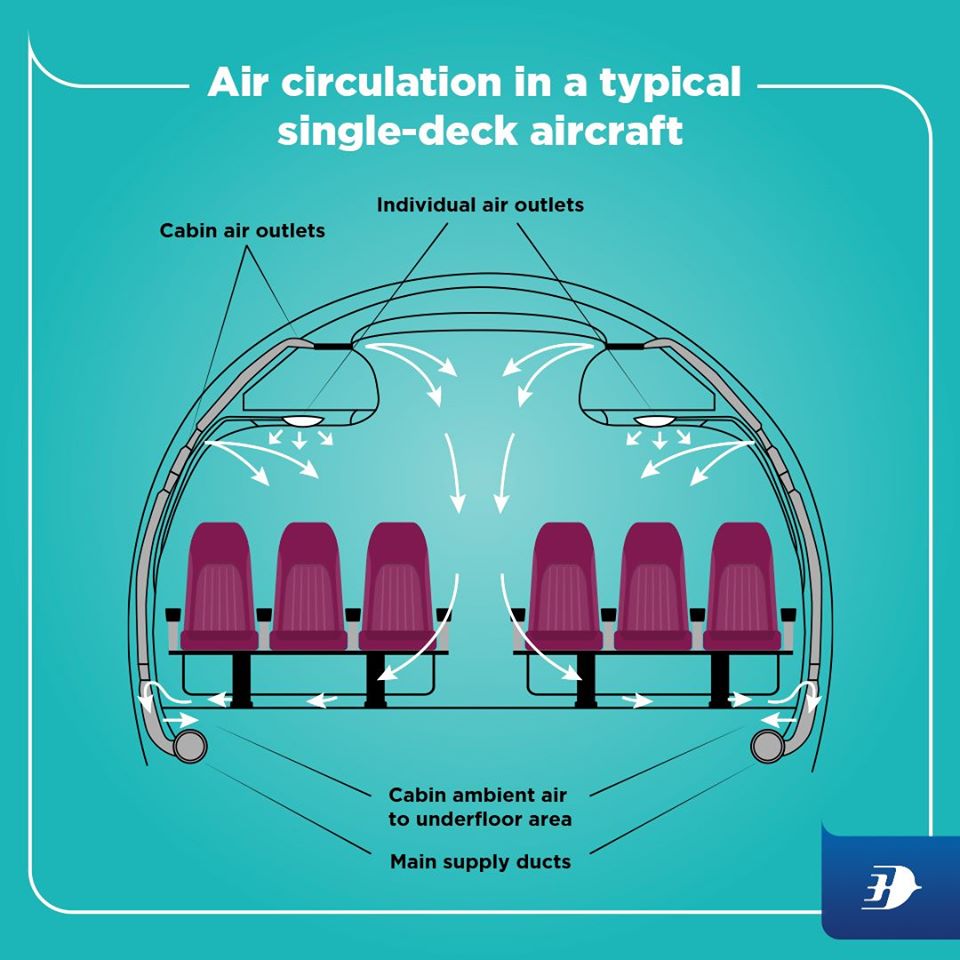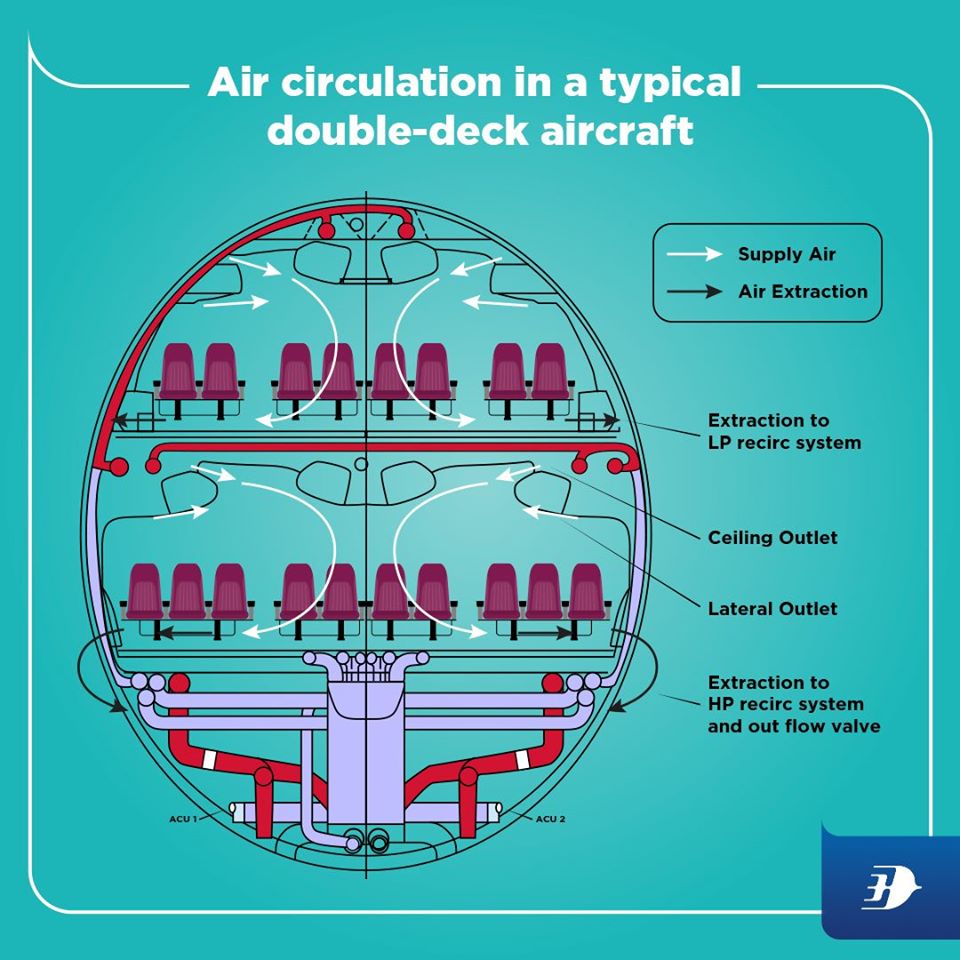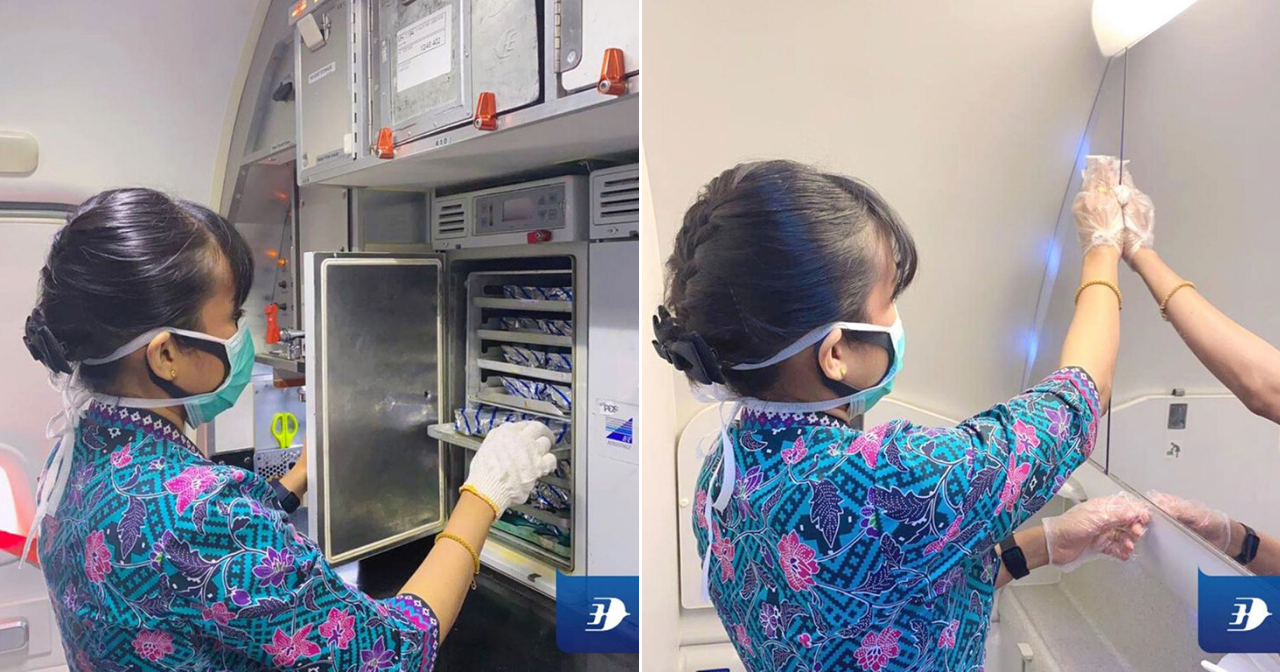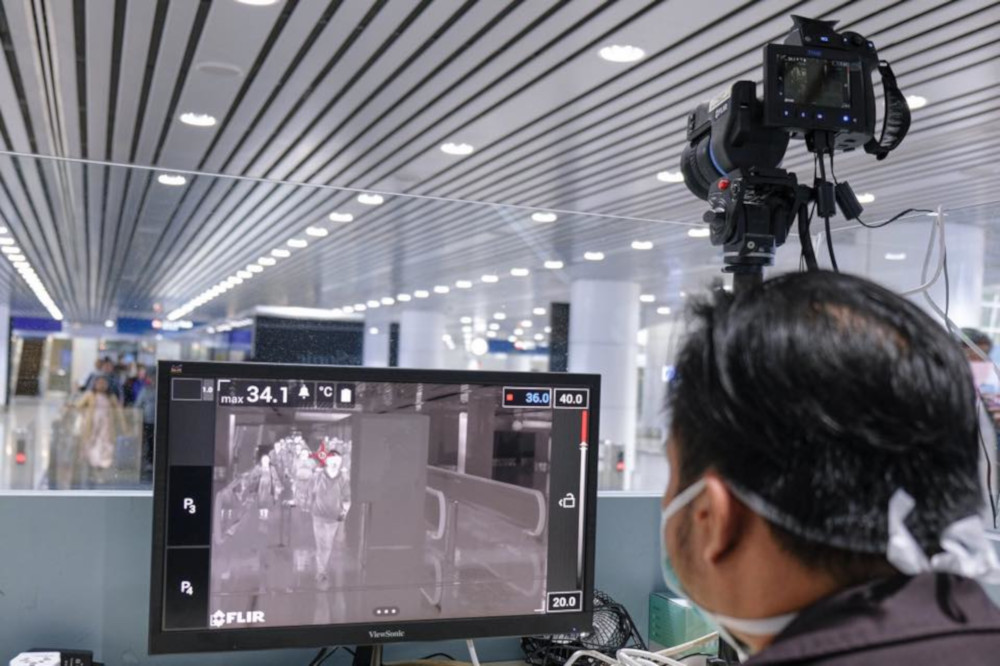Here's What You Need To Know About The Risk Of Catching Coronavirus On A Flight
Is it safe to travel right now?
If you're catching a flight anytime soon, you may be worried about catching something else...
The 2019 Novel Coronavirus (COVID-19) that originated from Wuhan, China, has since affected 28 countries and territories around the world, with 22 confirmed cases in Malaysia.
In light of this global epidemic, you may be wondering whether you should proceed with your travel plans.
Before that, we need to understand how the virus is transmitted among humans
Human coronaviruses are commonly spread from person-to-person through close contact. When an infected person coughs or sneezes, they send tiny airborne respiratory droplets containing the virus into their surroundings. Anyone can become infected if they inhale these droplets, so the risk of transmission becomes higher in public areas and enclosed spaces.
However, is the fear of contracting germs on an aircraft sufficient reason to cancel a flight? Malaysia Airlines took to Facebook to address these concerns:
According to Malaysia Airlines, the air we breathe in-flight is actually cleaner than the air in most office buildings
The air in aircraft cabins is regularly recirculated and filtered by High-Efficiency Particulate Air (HEPA) filters. These HEPA filters remove up to 99.97% of bacteria and airborne particles, and are of the same quality as air filters used in hospital operating theatres. Therefore, passengers are less likely to be exposed to viruses and bacteria.
Instead, they will receive freshly circulated air combined with external air, as depicted in the diagram below:
First, external air from outside the aircraft is compressed and cooled. It then flows into a large chamber called the mixing manifold, where it will be mixed with the HEPA-filtered air from the cabin. The mixed air will travel through air ducts around the plane, while used air is expelled out. Thus, the air inside the cabin is never static as it is changed 20-30 times each hour.
Malaysia Airlines also included diagrams of the airflow in both a typical single-deck and a double-deck aircraft, wherein the arrows indicate the direction of airflow as it’s filtered in and out.
Furthermore, Malaysia Airlines' crew members are equipped with face masks and surgical gloves when serving in-flight meals and cleaning the cabin
Malaysia Airlines also posted photos of their crew members demonstrating the proper cleaning practices observed during and after every flight. The lavatories are cleaned every 35 minutes, and all hard surfaces are regularly wiped down and disinfected.
Moreover, Malaysia Airlines is guided by aviation health procedures endorsed by the Ministry of Health Malaysia, World Health Organization (WHO), and International Civil Aviation Organization (ICAO) when interacting with a potentially infectious passenger. The airline has also placed control measures to reduce the risk of onboard disease transmission, such as providing medical communicable disease kits in every aircraft to cater for ill passengers.
What's more, all passengers travelling to and from Mainland China are subjected to body temperature screening at thermal scanner counters located at KLIA
The screening will take place at the airport boarding lounge 90 minutes before departure. Those with symptoms of fever, cough, and difficulty in breathing are required to identify themselves for further health screening by the health authority.
This is to meet the requirement set by the Chinese Customs, Immigration, Quarantine Authority, and will take effect immediately. For passengers leaving Mainland China, the screening will be conducted by the Chinese health authority.
Nevertheless, Malaysia Airlines urges all passengers to practise good hygiene and observe appropriate cough and sneeze etiquette
If you've decided to catch that flight, you should also take precautionary measures to reduce the risk of contracting the virus on a plane. For instance, you should regularly wash your hands with soap and water, or use an alcohol-based hand sanitiser after touching any surface. Avoid touching your face, and reduce contact with coughing passengers if you can.
